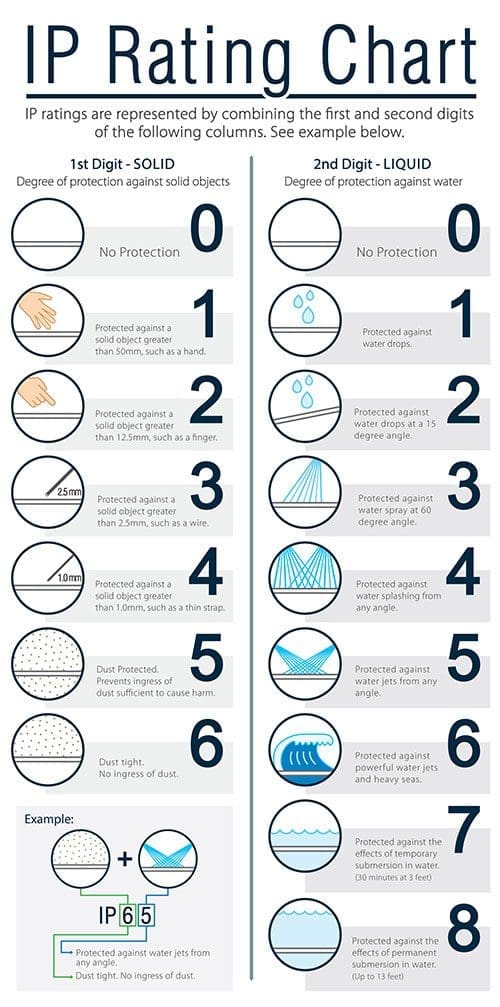You have a tough job and deserve the right tools. When choosing handheld devices, you have choices, but what is the right choice for you? Having partnered for 40 years with universities and municipalities using mobile and rugged devices, Cardinal Tracking has a lot of experience in this area.
Some things to consider when choosing a handheld device for enforcement include:
- Is it an Enterprise or Consumer device?
- What kind of screen/display does it have?
- How weather resistant is it?
- What is its battery life?
- How are OS changes supported?
- Should I get an all-in-one or two-piece solution?
- What accessories are available?
- How much does it cost?
This article will look at each of these considerations to help you decide the best device for your situation.
Consumer-Grade or Enterprise Grade Device
What is the difference between Enterprise and Consumer-grade devices?
An Enterprise device is built with the expectation that it will be used in a commercial environment. These devices are designed to be in the field for shifts lasting eight hours. A Consumer device is built with the expectation that it will function within normal personal usage.
Early adopters of Consumer devices in areas of fieldwork tried to make them fit various applications. The motivation for making consumer-grade devices fit those various applications was easily understandable. Often, Consumer devices were 25% (or less) of the up-front cost of purpose-built devices, their software/firmware was purposely maintained and improved, and a growing catalog of applications was available for fieldwork.
However, the advantages of buying a Consumer device off the shelf for Enterprise work were also a disadvantage. The products were not meant for extensive use outside, away from power sources, and in dirty or demanding environments.
The lines between Enterprise and Consumer handheld devices have narrowed in recent years, opening the door of opportunity to have the best of both worlds.
Here are other things to consider:
Screens/Displays
You have to see it to use it. Sunlight and Displays
Enterprise-Class, Purpose-Built devices are designed from the ground up to work outside in all lighting conditions. Consumer devices have beautiful displays in a variety of conditions as well, they are just not designed to defeat sunlight throughout a day’s work continually.
Often, Consumer devices require the display’s backlight to be turned up to near maximum for outdoor use, draining even the best batteries faster. What had been a 10-12 hour use model now becomes as little as 3-4 hours before needing to be plugged in, and sometimes maximum backlight will still not defeat the bright sun.
Enterprise device displays use a variety of engineering strategies such as display layers, backlight optimization, battery, power optimization within the firmware, and others to deliver on the promise of usability outside. These displays will even sacrifice some inside display optimization such as the highest resolutions, depth, and saturation to make sure they work in the environments where they are most often used.
Raindrops keep falling on my . . . screen. Display Technology
Touch screens that work all the time and have alternate input methods are important features that make Enterprise-Grade Devices the right choice for outdoor environments. Rain often causes havoc for touch screens, creating false input or water-pooling on the screen, which can totally shut down input on many Consumer devices.
Purpose-built devices have touch screens that can be operated in the rain and other data input methods. Some applications are better served with a stylus over a finger. Many applications are better off served with keyboards as the primary input and touch screens as secondary. Examples include geomatics, land survey, citation, and many other applications.
Cold weather use with gloves is another important consideration. Consumer devices can be operated with special gloves. However, gloves are more suited for pushing keys or using a stylus to enter precise data.
Backlit and water-resistant keys can also be important to enable seeing in dim lighting and outdoor weather conditions.
One more thing about screens.
If they break, it’s expensive, and if they fall on something “pointy,” they’re much more apt to break. Increasingly, devices have the latest chemically hardened glass and coatings to protect screens, but even the best will break. Having access to ready screen replacements from trusted sources is an important consideration.
Weather Resistance
Keeping the outside on the outside: The importance of sealing devices the right way.
Devices, whether Enterprise-Grade or Consumer-Grade, are increasingly addressing the need to seal devices against accidental water and wet conditions that may disable mobile devices or send them to a multiple-day submersion in a canister of rice.
Devices are sometimes rated on the IP Rating scale as developed by the United States Military for a variety of conditions, including; rain, shock, drop, and other factors. An Ingress Protection (IP) Rating, as developed by the International Electrotechnical Commission (IEC), is more common and describes the device’s ability to withstand particles like dust and various levels of moisture.

The complete charts and nuances of both Mil-STD-810 and IP ratings are too extensive for this article, but the most commonly seen IP Ratings for devices are IP65, IP67, and IP68.
See the chart above: IP67 means that the device is fully submersible up to a reasonable depth of water for a reasonable amount of time, and IP65 means that the device is dust-tight and can take water directed at it from a nozzle but shouldn’t be submerged.
IP68 is the highest rating for water and dust resistance in a device. It’s not just about being able to take a dunk in the water but also being able to get hosed down or take repeated cleaning with sanitizers and harsh chemicals.
Still, Consumer devices have come a long way in sealing. Gone are the days when an errant flip of a phone into a toilet or pool meant certain disaster. Some people take their phones or tablets for a swim. Fun! However, Consumer-Grade device IP ratings are for a device fresh from the factory and used in a way that the manufacturer intends.
Dropping the device continually in the name of any work or play activity or just general fumbling may compromise the sealing systems as designed. From there, device failure may occur.
Battery Life
Who has time to charge? Batteries and battery life.
Consumer devices are designed for Consumer use-cases like hours of video-watching or game-playing while on Wifi. Enterprise-Grade Devices are designed for hours of use performing fieldwork in challenging conditions with varying network connectivity levels.
Batteries have to be swappable and heavy-duty. Power management software and firmware have to be up to the task of allowing the device to make a full shift of work in even cold temperature conditions.
How Are Changes Supported?
Support and Software Development
Consumer product support was not the type of support that critical missions required. Agencies would shoehorn a device into use for an application and find that the device was discontinued before they ever deployed it in favor of the next version, which was often considerably different than the version it was replacing.
A reliable source for accessories and replacement parts such as batteries was often unavailable for the length of time devices were deployed.
Software development was another issue. In the past, versions of DOS, WindowsCE, Windows, Windows Mobile, and eventually Android and iOS changed, and the tools and development requirements changed nearly as rapidly. This resulted in unplanned bottlenecks or forced upgrades of field applications which caused a ripple effect on budgets and training.
Still, cross-platform development tools, responsive design, and Enterprise management software for mobile devices have better prepared them to be used in corporate and agency environments. Cloud storage and hosted applications mean the danger of loss of critical data and security breaches from lost devices is a thing of the past.
So, generally speaking, this should be game-over for most purpose-built field devices. Right? Far from it.
Purpose-built, Enterprise-Grade devices have continued to improve as well. In addition to incremental improvements driven by better technology, they have also benefited from Consumer market advances and lower-cost supply chains. Better components, better sealing technology, better displays, better software development tools, and more have been a boon for the manufacturers of these products.
All-in-One vs. Two-Piece solutions.
Another key factor in deciding on the best hardware for your environment is the form factor. Implementing a two-piece solution (rugged handheld device and mobile printer) allows for easier management of spares and being able to swap out damaged or failed components. They also present a smaller lightweight device to hold in your hand. There are a few minor tradeoffs for these conveniences. Establishing a connection between these devices requires maintaining a cable or Bluetooth connection. With two devices, you are also charging and maintaining two power sources – charging and maintaining spare batteries for both. With a one-piece solution, it’s all integrated.
Accessories
You have to accessorize.
Don’t overlook this. Accessories are important for field users in public safety, parking control, utility meter-reading..etc. Enterprise organizations require options like specialized cases, mounts for various vehicles, printers, scanners, ID readers, various body-mounting straps, harnesses, hot-swappable batteries, charging cradles, and fixtures that charge multiple devices at once and connect to the network for updates, the list goes on and on.
Look at some of the accessory options:
- Charger
- Charging Cable
- Car Charger
- Purse Handle
- Carrying Case, Shoulder Strap
- Charging Dock
Sure, consumer devices have robust lists of accessories available, including very durable cases, but these are often geared toward use models such as outdoor sports, not high-output fieldwork, and they tend to get discontinued as soon as the next new lineups of phones are available. Maintaining your supply of accessories could come down to hunting online and retail bargain bins.
A printer is essential in many Public Safety and Parking Enforcement use models. Citations and warnings are still largely issued on paper, and having a printer on hand means efficiency and safety.
How much does it cost?
Cost is usually one of the biggest considerations. But estimating costs can be complex on a technology solution that may be in place for five or more years and involve hardware and software updates. At some point in our lives, we’ve all bought inexpensive items in the interest of expediency or budgeting and then found that the real cost was much higher than if we had bought the right tool in the first place.
This is true for handheld computers and related technologies for enforcement. Stories of replacing and repairing devices, short life cycles, the need for excess investment in spares, and frustration over real-world use are common among agencies that deploy them.
Actual costs of lost revenue and costs of frustration and downtime necessitate the handheld tool choice is an important one.
What is the best handheld device for you?
This article has examined many things you should consider when purchasing handheld devices. One of our favorite options is the XF1R2 by Two Technologies. This handheld device gives you the best of both worlds with an enterprise case, printer, and peripherals with the consumer convenience of the ability to add a phone. This allows you to swap the phone if needed. It is built to withstand daily life in the field, but all of its components can easily be replaced in less than a minute.
If you are looking for a two-piece solution, the Janam XT3 with a Zebra printer is a good choice. The XT3 offers an ultra-rugged design and works with Android with Google Mobile Services (GMS). This handheld unit has Android Enterprise Recommended (AER) certification and is a nice enterprise solution.
Want to talk more about handheld devices? Contact us.




